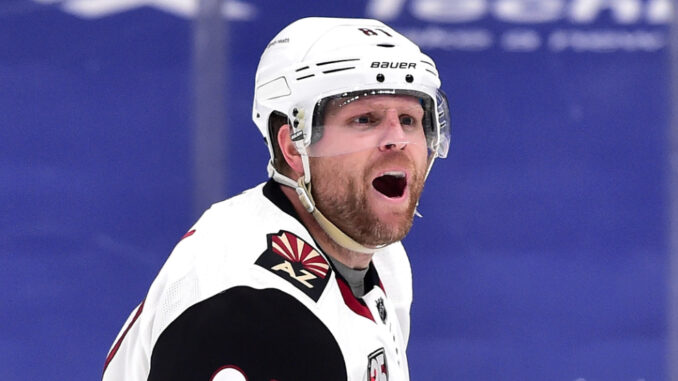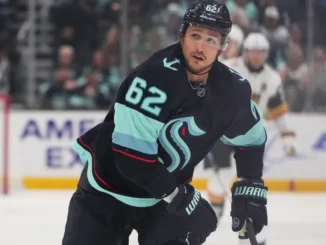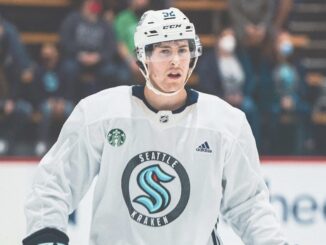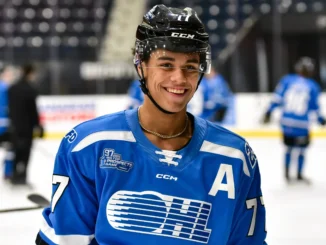
After nearly one month of the NHL’s free agent window being open, almost all of the big names have found new homes for the 2022-23 season. After an underwhelming inaugural NHL campaign, the Seattle Krakenwere active this summer, signing several significant free agents to bolster a middling roster. Even after an initial period of splurging, there are still bargains to be found. Players who may have lost out on the contractual version of musical chairs could be incentivized to accept deals below market value just to ensure a spot in the NHL this season.
With around $4 million in cap room to play with, the Kraken can afford to dip back into the free agent pool and build on a promising roster. Here are three unsigned free agents who could provide surplus value on bargain-bin contracts in 2022-23.
Phil Kessel, Forward
2021-22 Statistics: 82 GP – 8 G – 44 A – 52 PTS
I’ve consistently harped on the Kraken’s anemic offense all year – they scored the fourth-fewest goals per game last season – and the offseason has provided little respite. They made strides in drafting Shane Wright fourth-overall in the 2022 Draft, as well as signing Andre Burakovsky and trading for Oliver Bjorkstrand in quick succession this summer. Inserting that trio into the team’s top-nine gives them a strong, if unassuming, core of offensive talent. Even so, playable depth is the name of the game in the modern NHL, and several notable options are still unsigned, including Phil Kessel.
Despite seeing his powers wane in recent years, Kessel remains one of the most skilled offensive players in the league, even if that’s all he has to offer at this point in his career. His skating continues to be a deceptive strength, and his controlled zone entry rate of over 72% of his total attempts comes in near the top of the league.
Related: Seattle Kraken’s Bjorkstrand Trade A Win For The Franchise
More renowned for his shot, Kessel’s passing positions him as a versatile dual threat with the puck. He completed 1.51 high-danger passes per-60 at 5v5 last season (those going into the slot or from behind the net), ranking slightly above league average according to Corey Sznajder’s tracking data.
Although he scored at a 33-goal pace as the leading man during his tenure with the Toronto Maple Leafs, Kessel has performed best in a supporting role. While being deployed as part of the heralded HBK Line during the Pittsburgh Penguins’ two consecutive Stanley Cup runs, the 34-year-old winger produced 45 points in 49 games. He had a strong case for winning the Conn Smythe Trophy as playoff MVP in at least one of those postseasons. Playing sheltered minutes allowed him to feast on other team’s weaker players and effectively leveraged his high-end skill. His potential role with the Kraken would resemble his time with the Penguins, increasing the likelihood he generates surplus value on a short-term pact.
Evan Rodrigues, Forward
2021-22 Statistics: 82 GP – 19 G – 24 A – 43 PTS
For 29-year-old Evan Rodrigues, the 2021-22 season was a tale of two extremes. With Sidney Crosby and Evgeni Malkin missing the start of the season while recovering from offseason surgery, the center found himself in an elevated role at 5v5 and on special teams. As a result, he scored at a torrid pace to post 30 points in 35 games before Malkin returned to the lineup. Having already broken career-highs in goals and points before midseason, the second half should have been electric with the franchise pillars back in the fold.
Instead, Rodrigues sputtered to a full-season total of 43 points, only tallying four goals and 13 points in the final 47 games of the campaign while firing at a miserable 3.2% clip in the process. For those who might miss the connection between ice time and deployment and points, Rodrigues’ season might look like nothing more than an unsustainable mirage. However, his micro-stat profile paints a wildly different reality.
| Statistic (Per-60 at 5v5) | Rodrigues | Penguins Rank |
| High-Danger Shot Assists | 2.09 | 3rd |
| Shots | 13.82 | 3rd |
| Scoring Chance Assists | 4.75 | 3rd |
| Zone Entries | 27.1 | 1st |
Despite his subterranean shooting percentage (SH%), Rodrigues contributed in ways that don’t always show up on the scoresheet, providing invaluable support for the team’s stars. The Kraken are molding a roster that appears more capable of generating offense off the rush, a more suitable approach to the modern NHL. Although he should earn a raise on the $1 million he made last season, his cap hit should be within the realm of affordability for Seattle.
Sonny Milano, Forward
2021-22 Statistics: 66 GP – 14 G – 20 A – 34 PTS
Before I delve into what Sonny Milano can offer interested suitors, it bears commenting on the illogical decisions made by the Anaheim Ducks for him to end up on the open market. As a restricted free agent (RFA) still under team control, the Ducks could offer Milano a qualifying offer that would protect them from an offer sheet, but instead, they declined to do so and allowed the 26-year-old winger to go unqualified and free to choose his next destination.
Although Milano’s development has been rocky since the Ducks picked him in the first-round pick in 2014, he finally approached his once sky-high potential in 2021-22. Most often playing alongside Trevor Zegras in one of the NHL’s most electrifying duos, the native of New York state posted career-highs in assists (20) and points (34).
Related: Seattle Kraken’s Beniers And Wright Are Franchise Cornerstones
For a team as downtrodden as the Ducks have been recently, you’d think that keeping an exciting player would be a top priority. Even if the relationship soured, extending him a qualifying offer would give them the option of trading him at the next deadline, but forgoing even that course of action is questionable for a Ducks team most likely challenging for a high lottery pick in the vaunted 2023 Draft.
Back to Milano, the stickhandling maestro generated an absurd rate of incisive passes, with his 3.83 high-danger assists per-60 ranking third in the entire league. In addition, he led the Ducks in scoring chance contributions (shots plus passes) while being an above-average puck carrier in transition. Pairing him with someone like Zegras, who can do the heavy lifting in terms of zone entries, allows him to focus his efforts on creating plays in the offensive zone.
Given that the Kraken were mostly one-dimensional in attack by being overly reliant on the cycle, adding someone of Milano’s caliber could add some much-needed versatility.
Kraken Could Be A Playoff Team in 2022-23
Underling the Kraken’s positive offseason is the fact that the Pacific Division remains arguably the weakest in the NHL, increasing their chances of earning a first-ever playoff spot next season. Although the organization has invested a significant amount of money in veterans with minimal upside, extending cheap contracts to the aforementioned players for an increased role could represent a tidy bit of business.
Even if the agreements fail to deliver a playoff race, flipping those players for future assets only helps the team’s future outlook. If any team should be prioritizing the long term, it’s the Kraken.
Data courtesy of AllThreeZones, Evolving Hockey, Natural Stat Trick, and the NHL.




